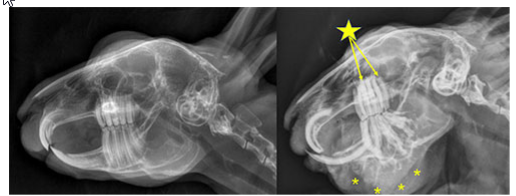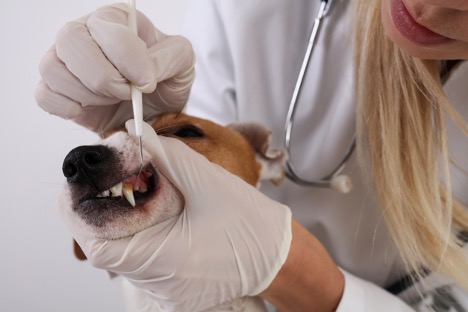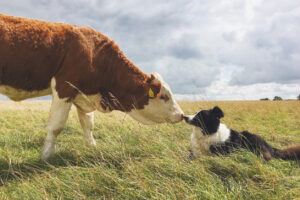Did you know that poor dental health can lead to other medical problems with your pet? Yes, just like us, pets can get periodontal disease. By age 2, 80 percent of dogs and 70 percent of cats have some form of periodontal disease. Early detection and treatment are critical because advanced periodontal disease can cause severe medical problems and pain for your pet. It is essential to your pet’s health they receive proper dental care.
5 Reasons for Proper Pet Dental Care
- Pets that don’t get dental care can painfully lose their teeth. Also, as their teeth decay, they can experience significant pain, which may affect their behavior.
- Dogs, cats, and other pets can be very good at hiding their pain. So, when pets don’t receive regular dental exams, dental problems may develop, and we must pull their teeth. Early detection can prevent this.
- Animals need their teeth to chew their food correctly. It is the first stage of digestion. But as they age, their teeth wear out, affecting their ability to chew their food.
- Excessive wear of pet teeth can cause tooth decay.
- Dental infections can lead to severe problems with your pet’s organs. The bacteria in the oral cavity of a pet with periodontal disease can travel into the circulatory system. From there, it can travel throughout the pet’s body and can cause damage to the heart, liver, and kidneys.
Signs of Pet Dental Problems
- bad breath
- broken or loose teeth
- extra teeth or retained baby teeth
- teeth are discolored
- abnormal chewing, drooling or dropping food from the mouth
- reduced appetite or refusal to eat
- pain in or around the mouth
- bleeding from the mouth
- swelling in the areas surrounding the mouth
Test Yourself
Now see how much you know about pet dental health. Take this quiz.
Dental Care for Small Mammals
Small animals like rabbits, chinchillas, guinea pigs, rats, and reptiles need vastly different care than dogs and cats. Dental disease is widespread in pet rabbits, chinchillas, guinea pigs, and rats and can profoundly affect your pet’s overall health. Below is a comparison of a rabbit with normal teeth and a rabbit with overgrown teeth and dental disease.

Picture from College of Veterinary Medicine, University of Illinois
The rabbit on the left has normal teeth and no dental disease. The rabbit on the right is suffering from severe dental disease. Its front teeth are not coming together correctly; the upper molars are crowded, abnormally curved, and overgrown (yellow star and arrows). Also, the lower molars have a severe infection associated with the tooth roots that have caused the breakdown of the jaw bone (asterisks outlining). These X-rays show how helpful imaging can be in understanding more about an individual animal’s dental disease.
Our veterinarians are trained in advanced exotic pet dental care and perform many procedures, including:
- Dental cleaning
- Dental exams
- Skull and dental radiological interpretation (particularly for a diagnostic plan for rabbit dental disease progression)
Schedule Your Pet’s Dental Visit
If it has been more than a year since your pet’s last dental exam and cleaning, or they have never had one, we urge you contact us now and schedule. We will also be happy to show you at your pet’s next visit how to brush your pet’s teeth.
Sincerely,
Friendly Team at
Braescroft Animal Clinic




